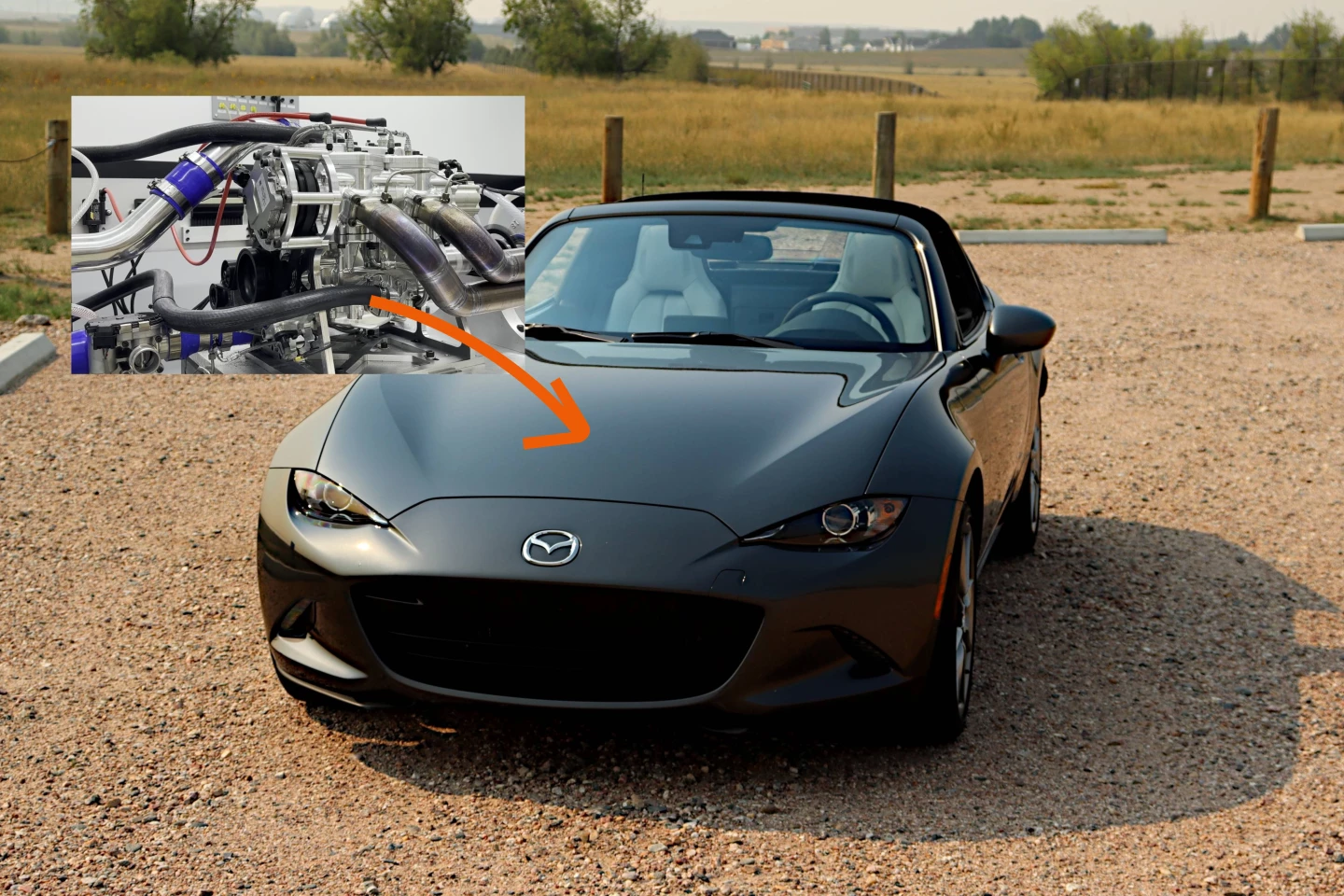The defining characteristic of a two-stroke engine is to fire (combust) every time the piston is at top dead center. This makes them highly power dense, but also notoriously makes two-stroke engines dirty, inefficient, and not prone to long lifespans.
Alpha-Otto has a design that aims to eliminate all of those drawbacks. The RevForce engine introduces a single, transformative change to the conventional two-stroke layout that preserves its benefits while removing its major flaws.
The secret is the addition of a rotary valve.
Yep, that’s it. Sometimes the simplest changes are the most profound. Like adding microtextures to plastics, the rotary valve idea in the RevForce design could potentially be an industry game-changer.
Traditional Two-Stroke Engine Issues
A traditional two-stroke engine has the piston pushing down after firing, moving past an exhaust port and allowing the exhaust gases to leave the chamber. Simultaneously, as the piston travels downward, injected air and fuel are being compressed and are then released into a diversion port into the chamber. As the piston rises again, compression of the fuel and air happens as the vacuum created underneath the cylinder pulls in another batch of fuel and air.
The problem with that design is that it means lubrication cannot be added below the cylinder, as that is now a pre-combustion intake chamber. And in order for the compression stroke to work as the cylinder moves upward, the diversion port and exhaust ports must be open at the same time for part of the cycle to ensure that all of the exhaust gases are out of the chamber. Otherwise, a vacuum would occur and prevent the fuel/air from entering the chamber. This inherently means that some of the fuel/air mixture is also exhausted before combustion. That’s inefficient.
Modern designs using exhaust resonance to “push” some of that fuel/air overflow back into the chamber have mixed results. Worse, lubrication still relies on mixing oil with the fuel, which sees some of it burned in the process, creating more emissions and decreasing fuel economy.

How Alpha-Otto Solves Those Issues
Alpha-Otto’s rotary valve is added to the conventional exhaust port slightly behind the opening. This eliminates the need for a bypass port and allows the lower chamber to once again be used for lubrication, just like in four-stroke engines. That alone reduces emissions and increases engine longevity.
The rotary valve also means that the blockages caused by conventional poppet valves are not an issue as poppet valves are not needed in Alpha-Otto’s design. As the cylinder drops during combustion, the rotary valve opens at the right moment to allow exhaust gases to exit. Just near the end of that, as the piston passes the middle of its stroke and vacuum begins to hold exhaust in the cylinder, the intake valve is passed and compressed air from a simple supercharger comes into the chamber, continuing to push the exhaust out. At the moment the rotary valve nears closure for the exhaust, fuel is injected into the cylinder. The piston ends its downstroke and begins moving upward, compressing the air/fuel mix until combustion happens and the whole cycle begins anew.
This means that the high torque efficiency of the two-stroke engine is kept, while the cleanliness and longevity of the four-stroke engine is gained. A win-win scenario. What’s more, the exhaust rotary valve, air compression, and fuel injection are electronically controlled, meaning they can be adjusted on the fly to change timing as needed.
That on-the-fly adjustment is why demonstrations of the RevForce engine show it running on compressed natural gas, switching on the fly to burning hydrogen, and on to other fuels. Alpha-Otto has tested its two-stroke design with natural gas, hydrogen, gasoline, and non-diesel biofuels.
The RevForce engine is a working prototype scaled to 200 horsepower (149 kW) in a straight-twin configuration. Alpha-Otto is launching a WeFunder campaign in mid-July of 2025 to move the RevForce past the prototype stage and into limited production. The company is targeting fixed power generation systems to start, as that industry is a far easier nut to crack than is automotive. But the ultimate goal is to have the engine finding use in a variety of applications, including transportation.

It’s only a matter of time before one gets shoved into a Miata.
Here's a video of the Alpha-Otto RevForce in operation:
Source: Alpha-Otto






